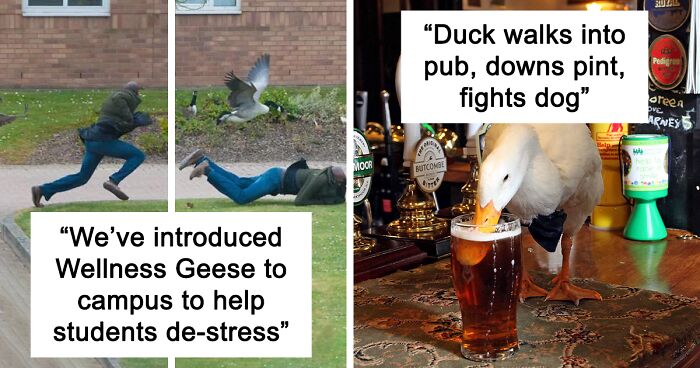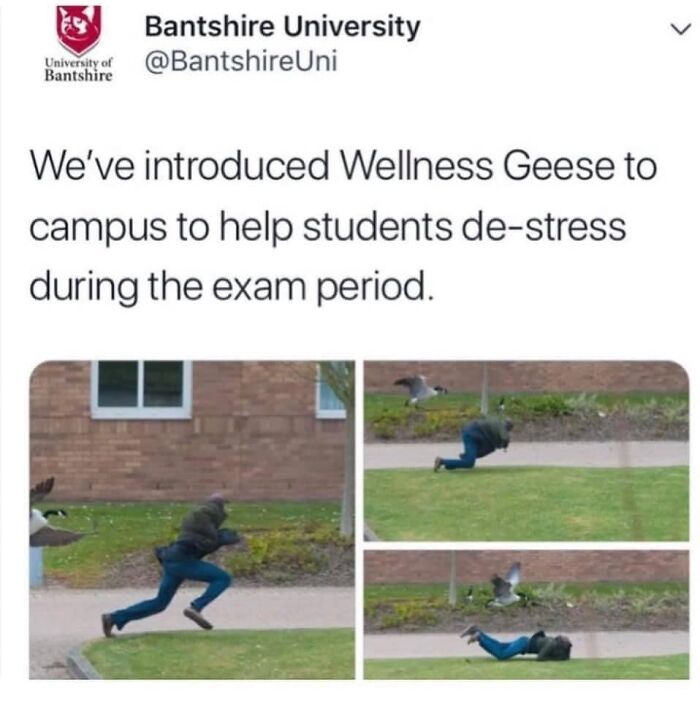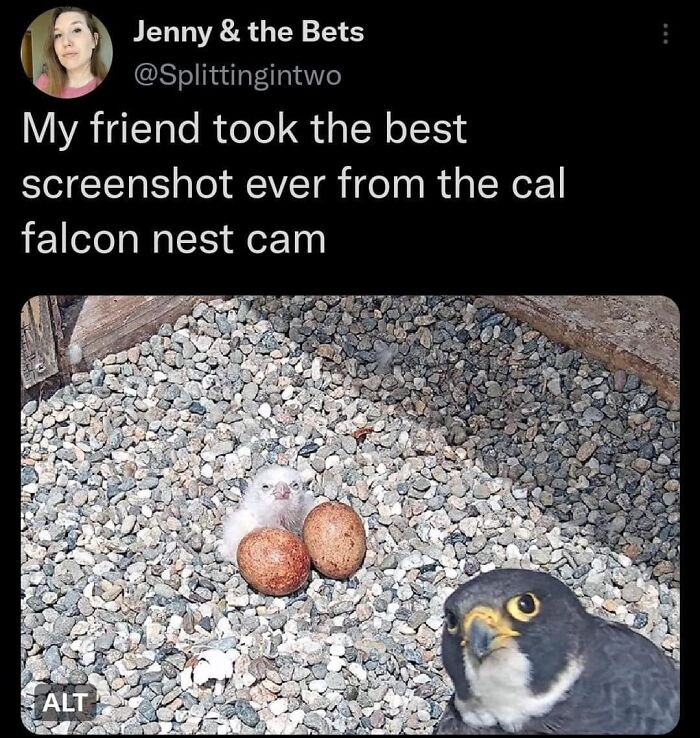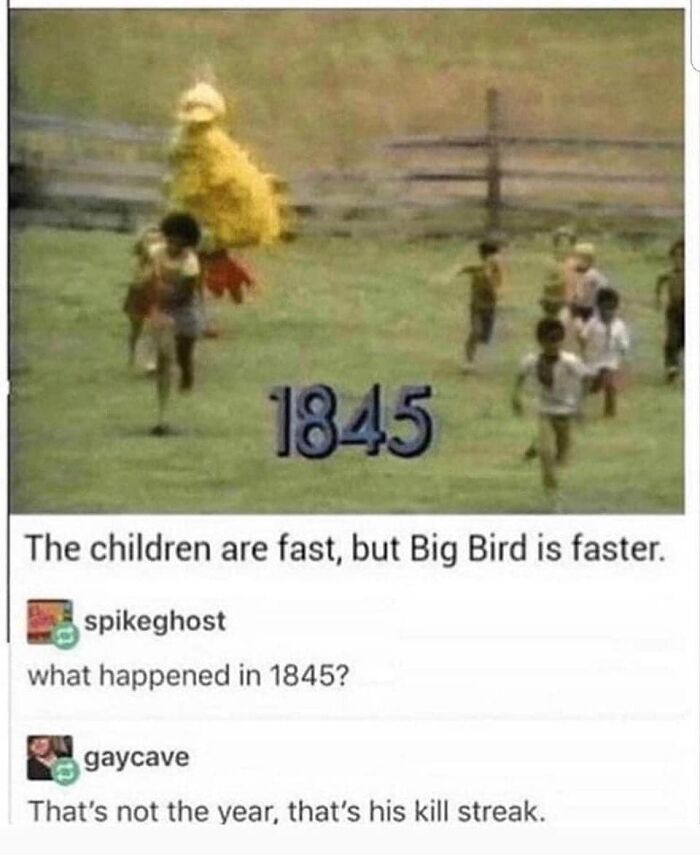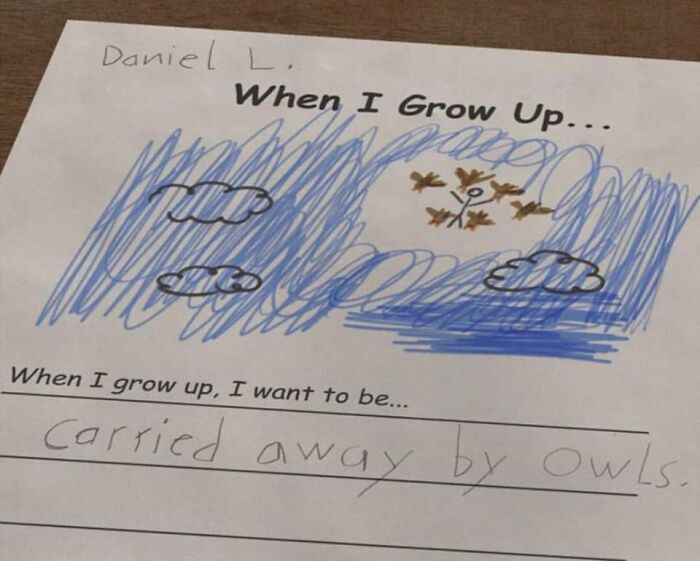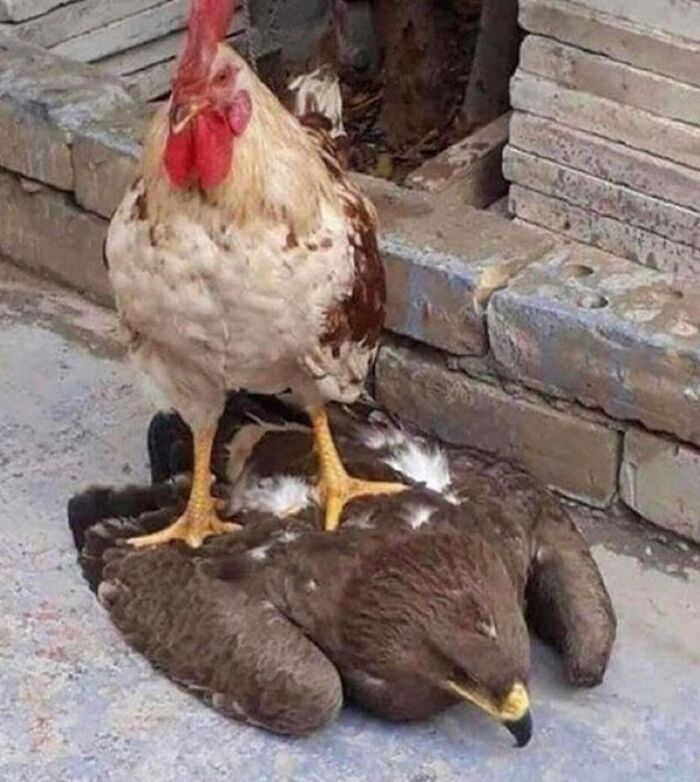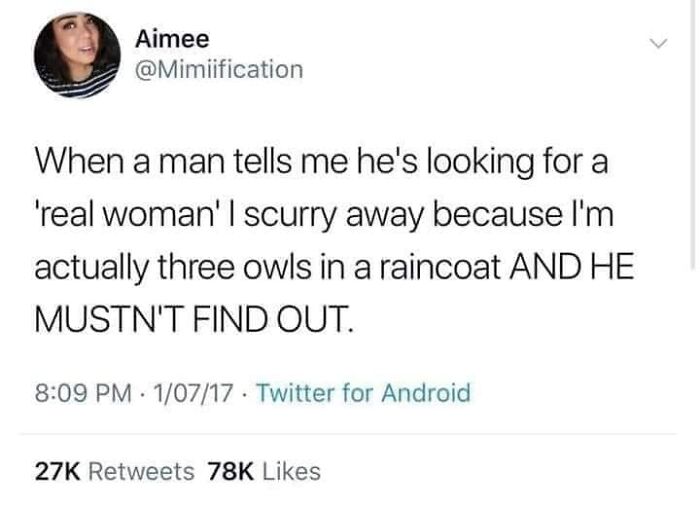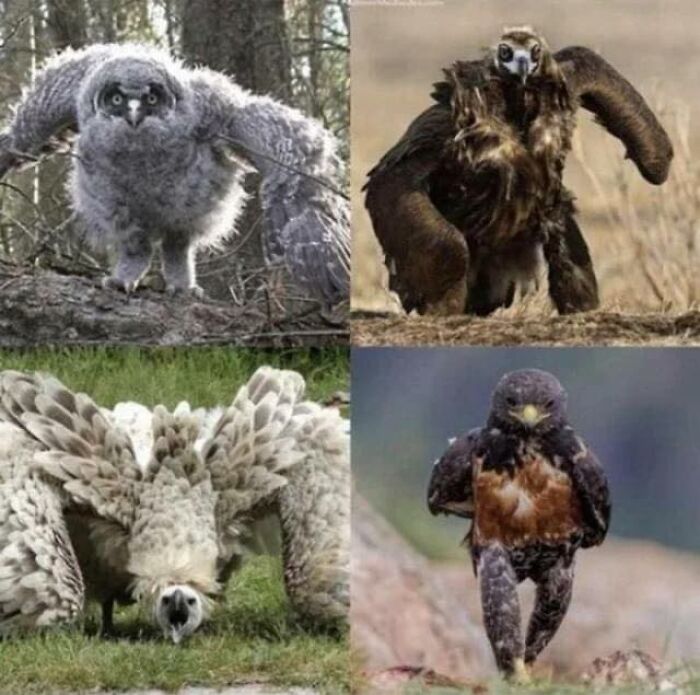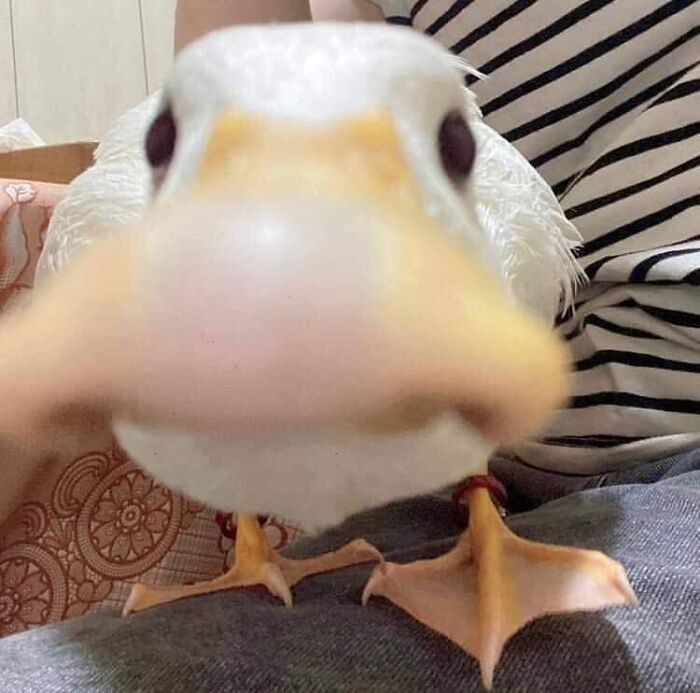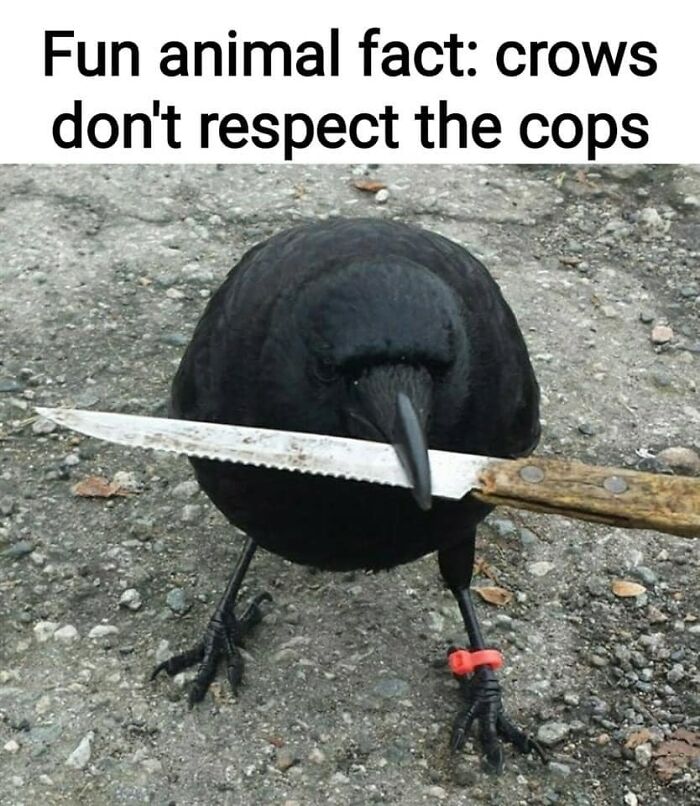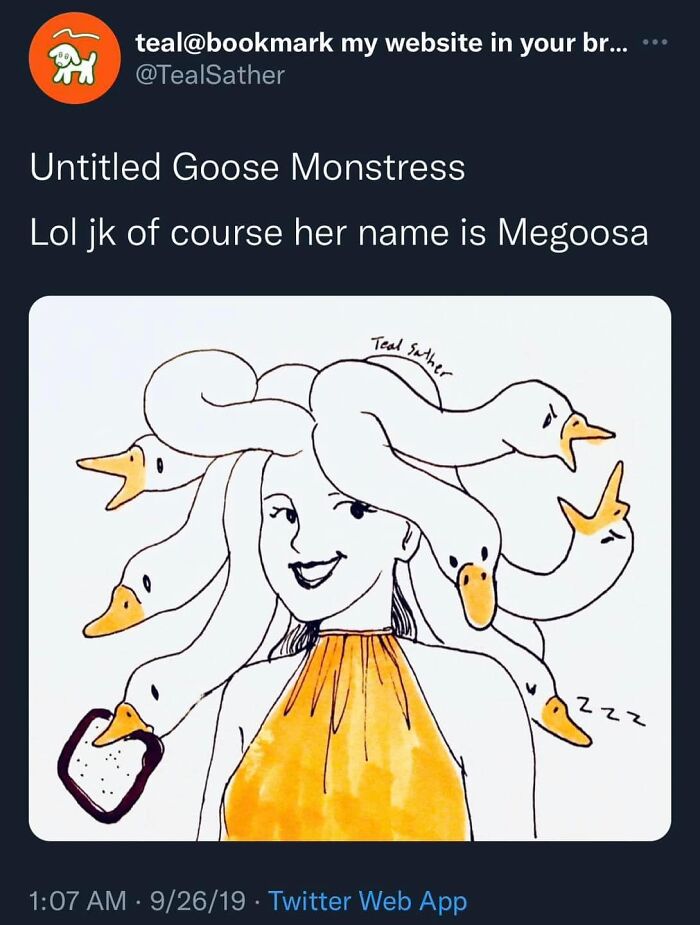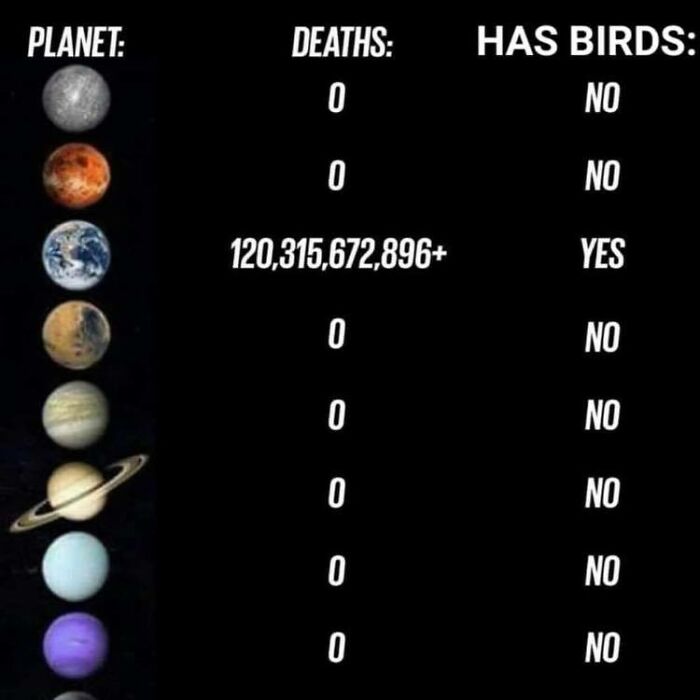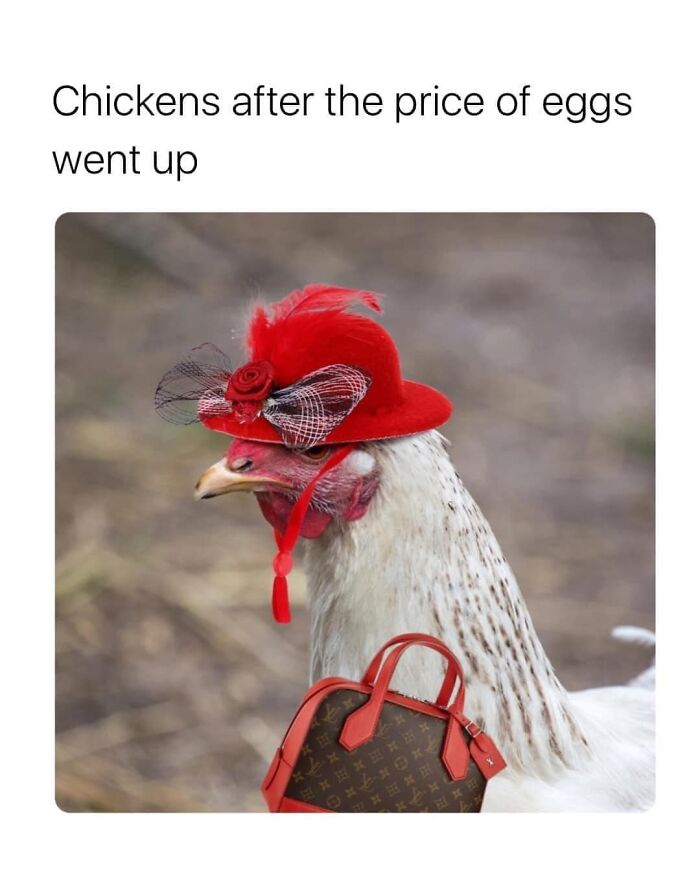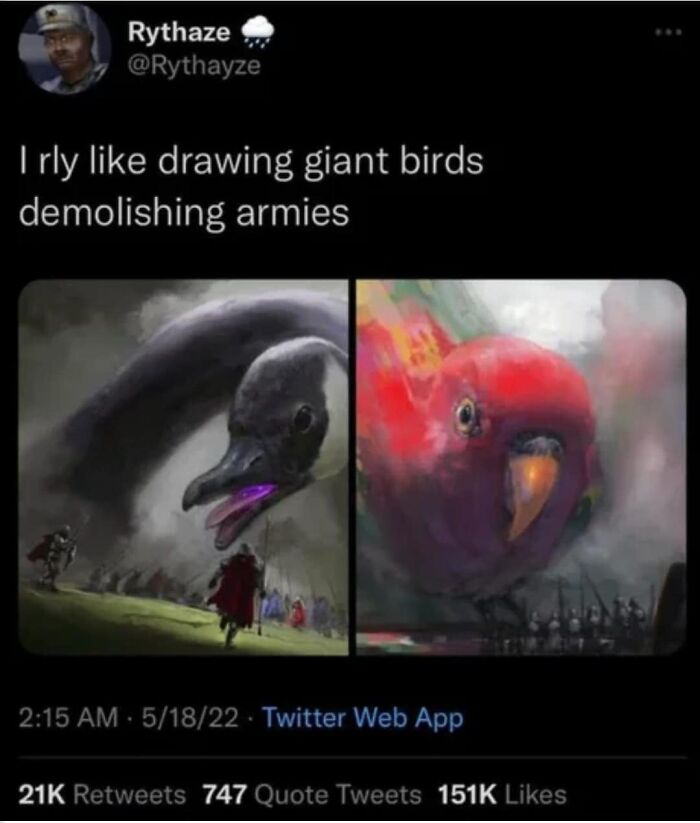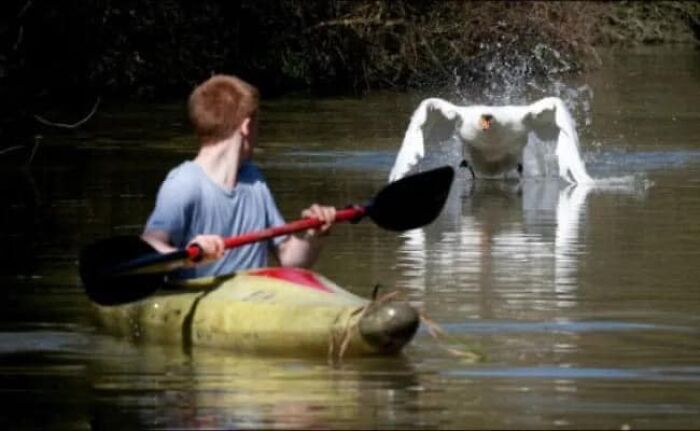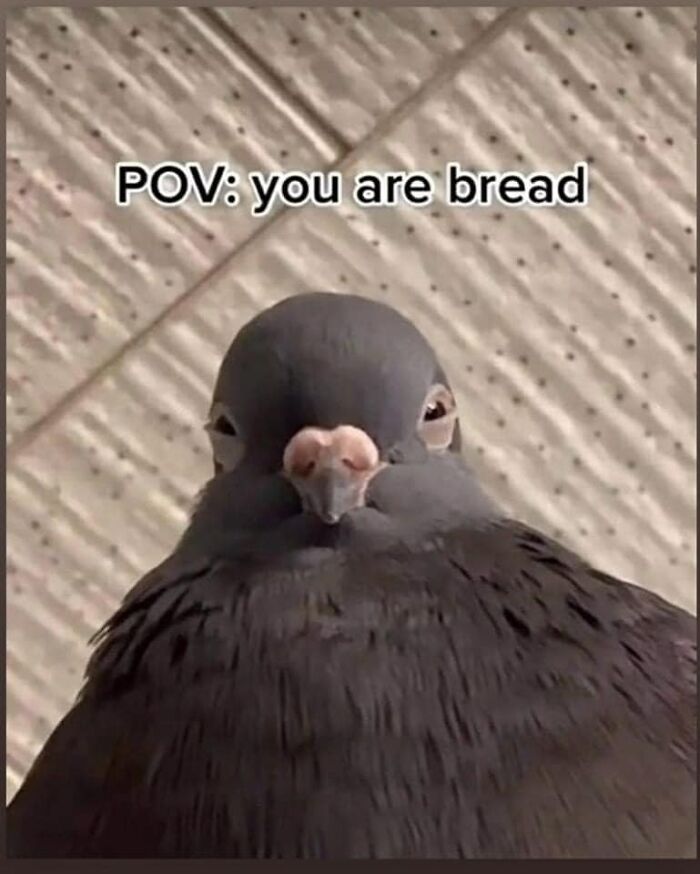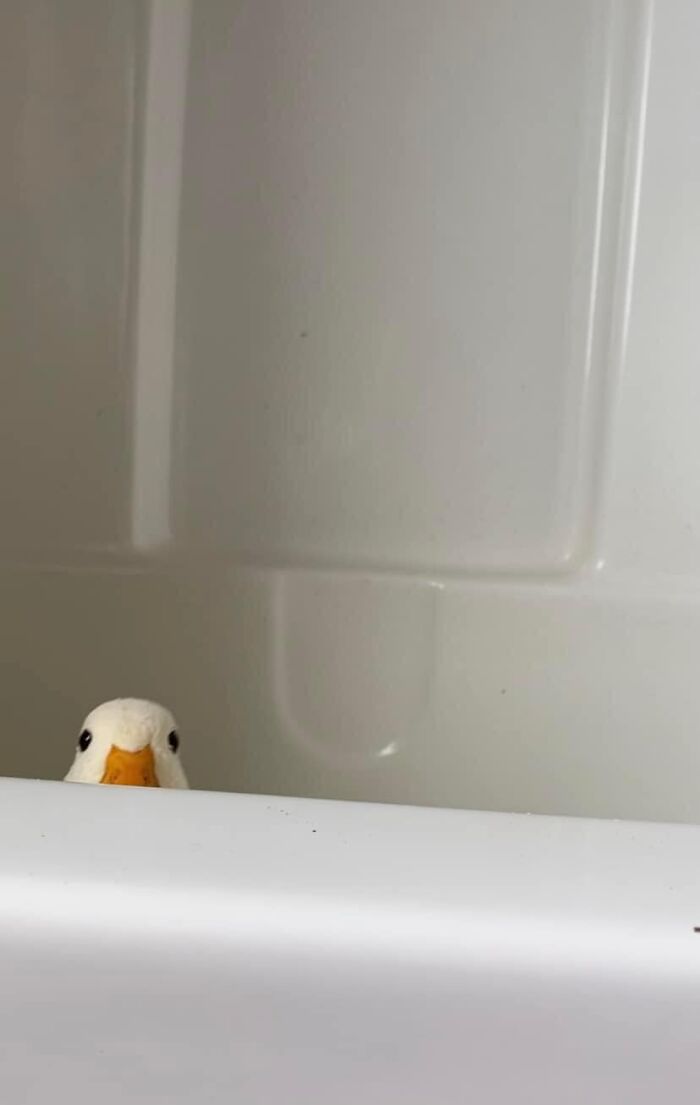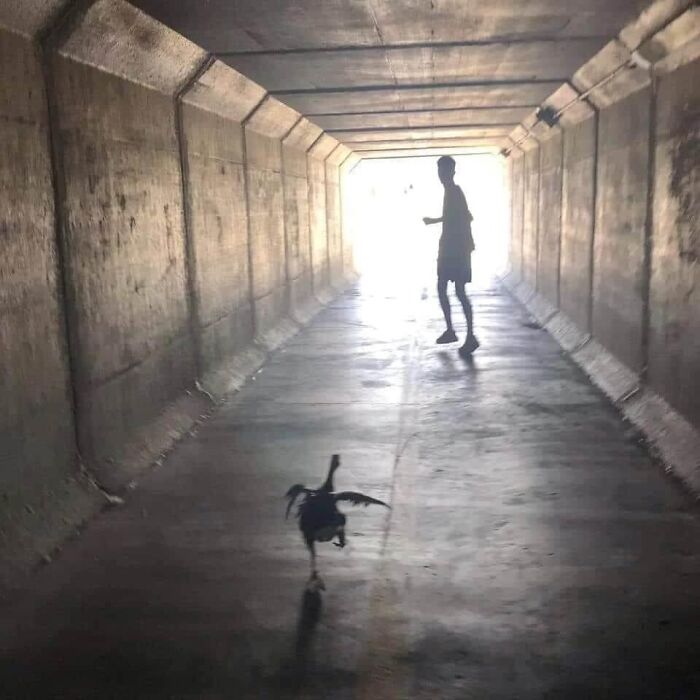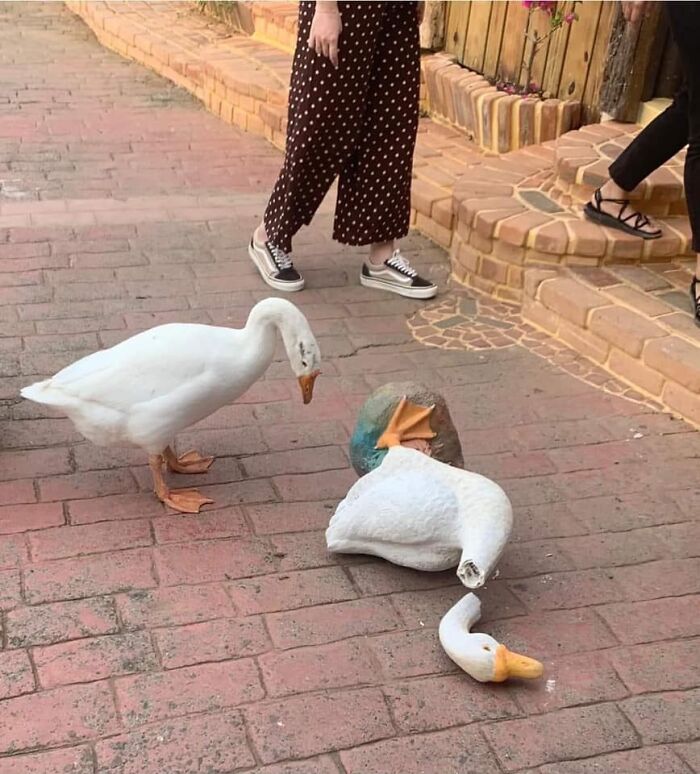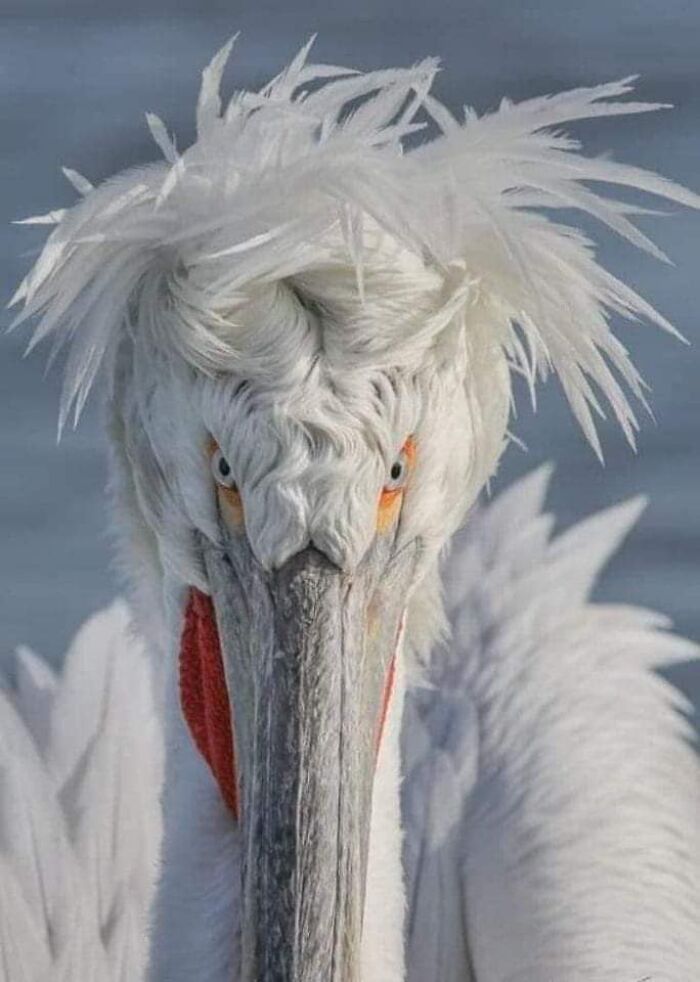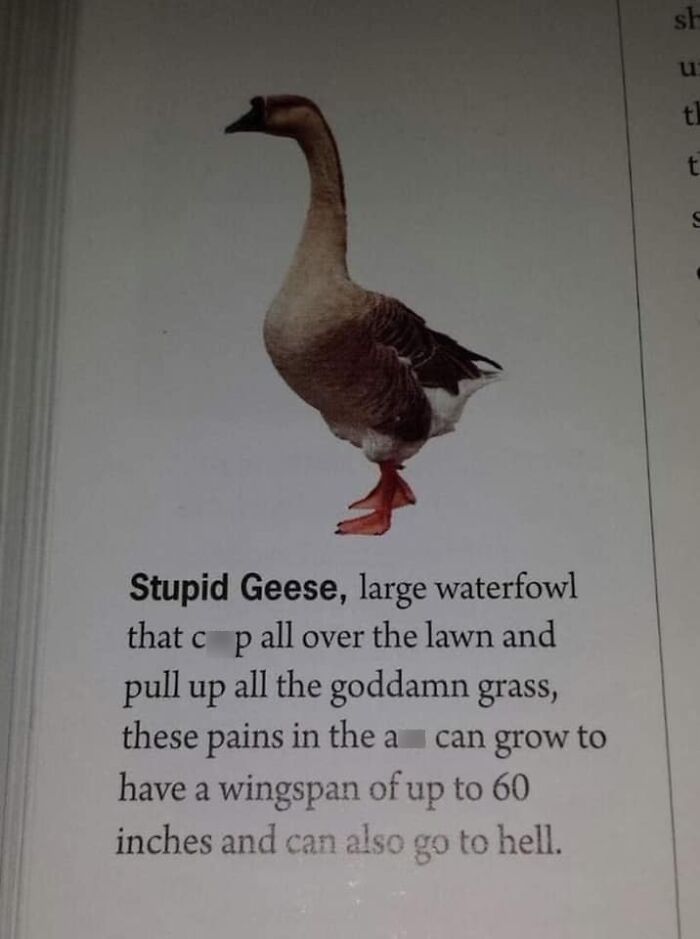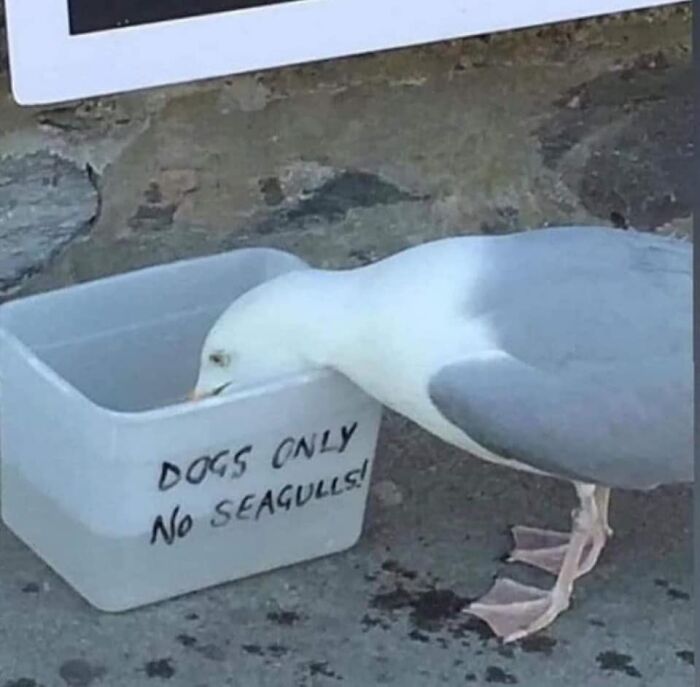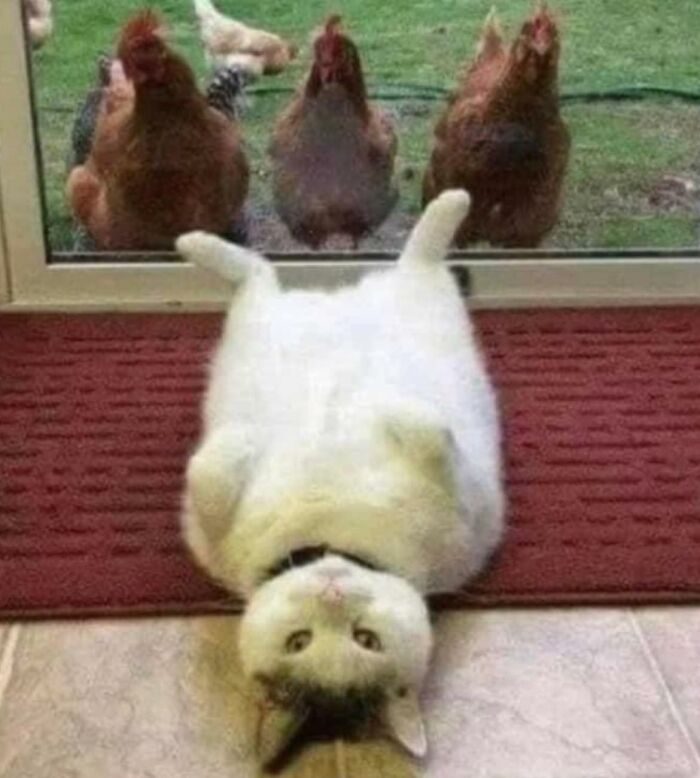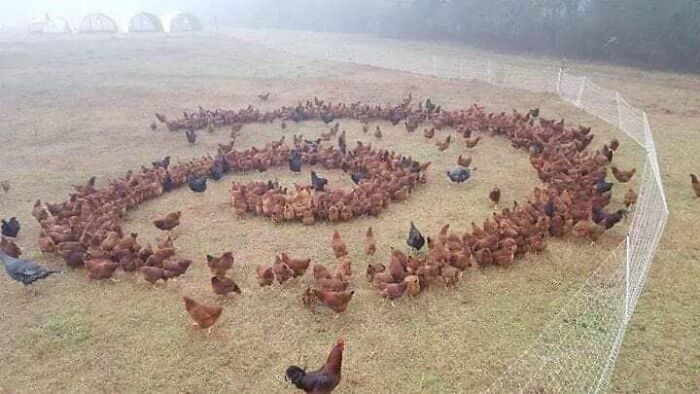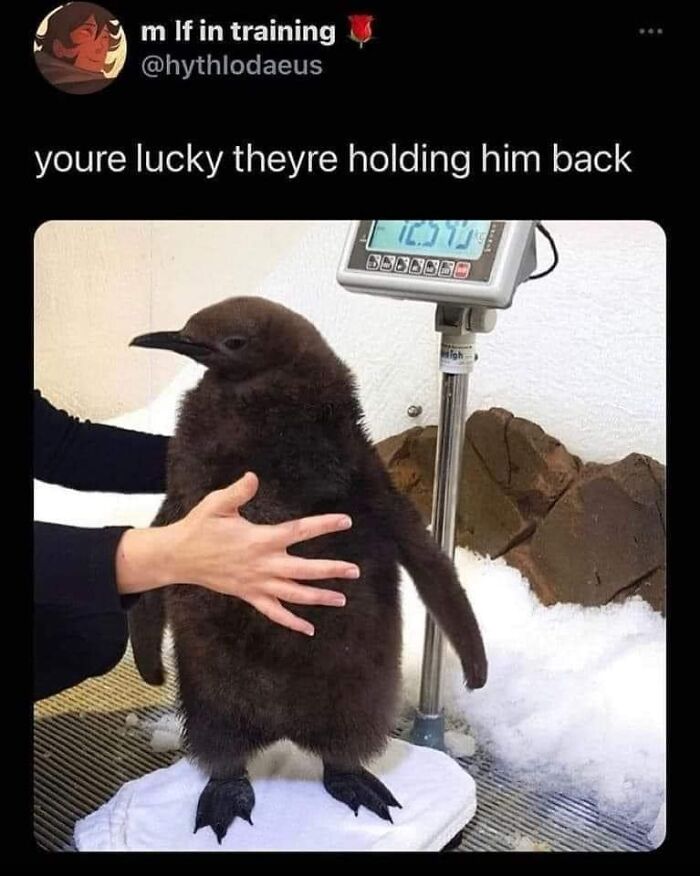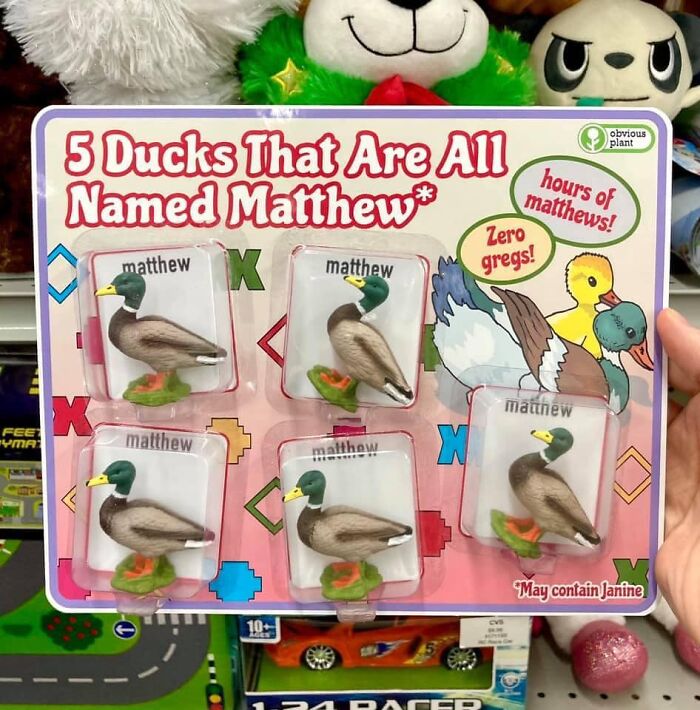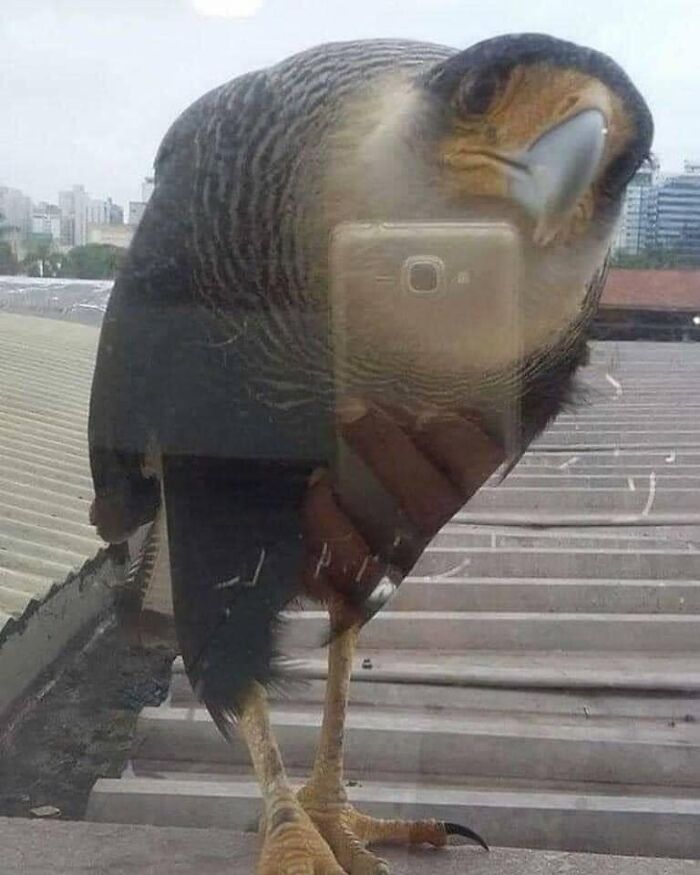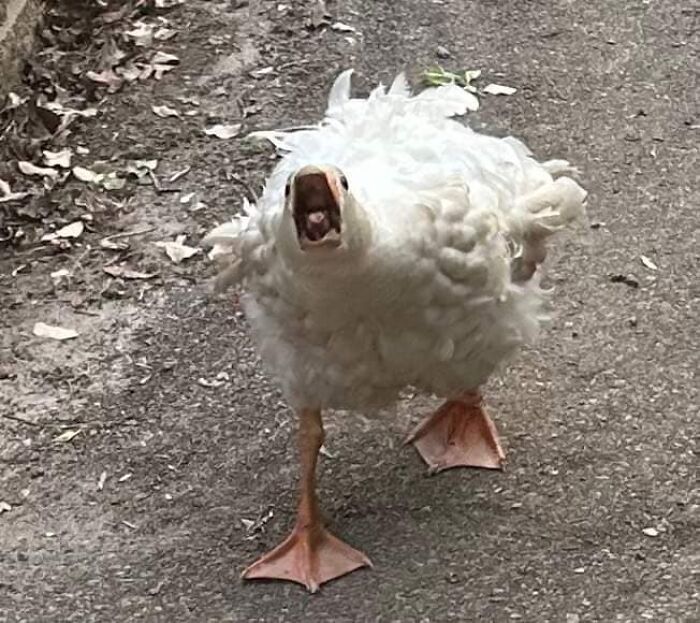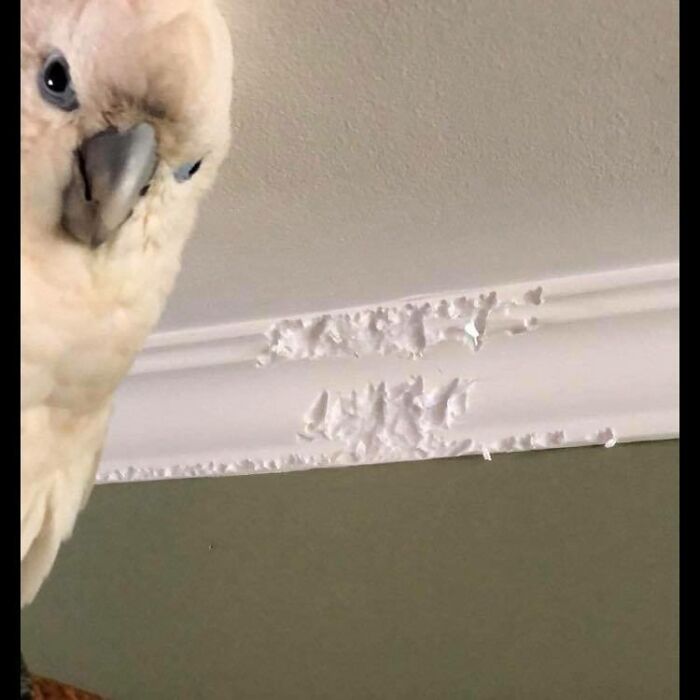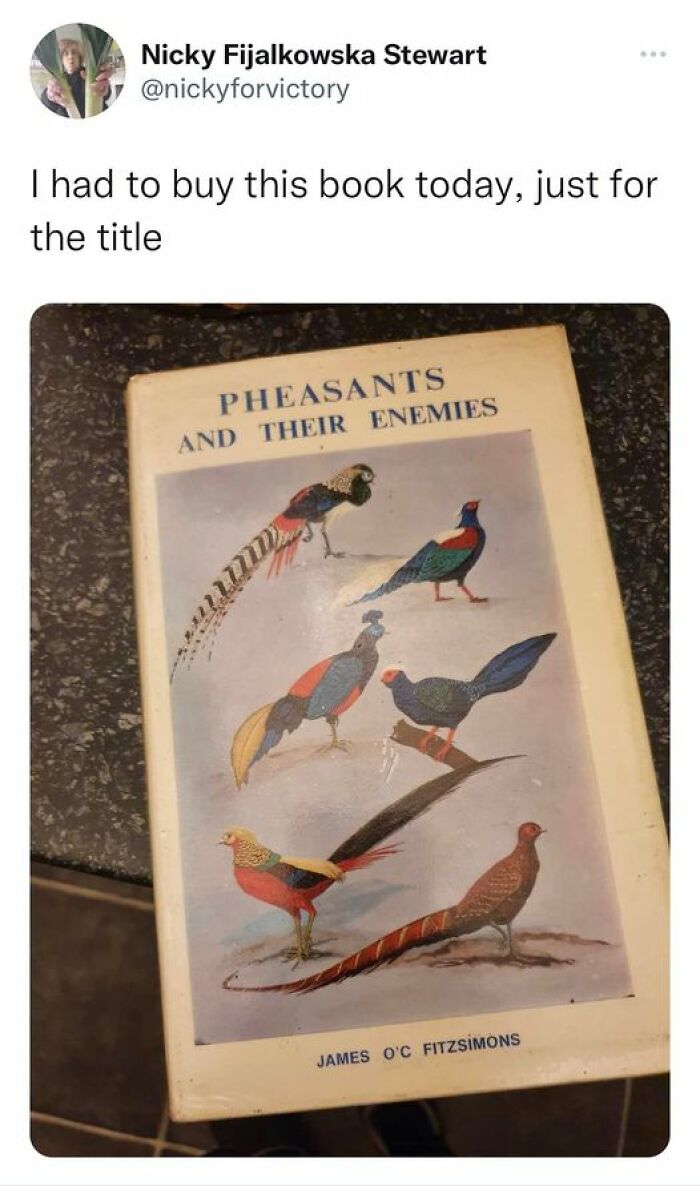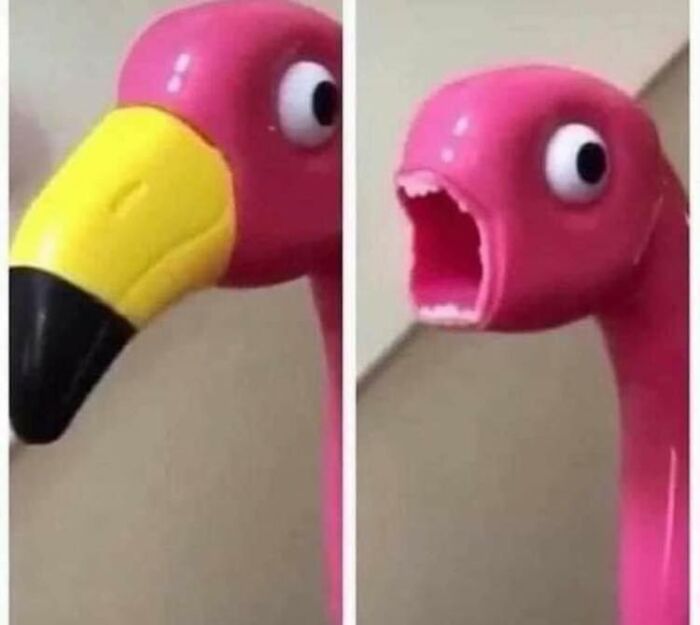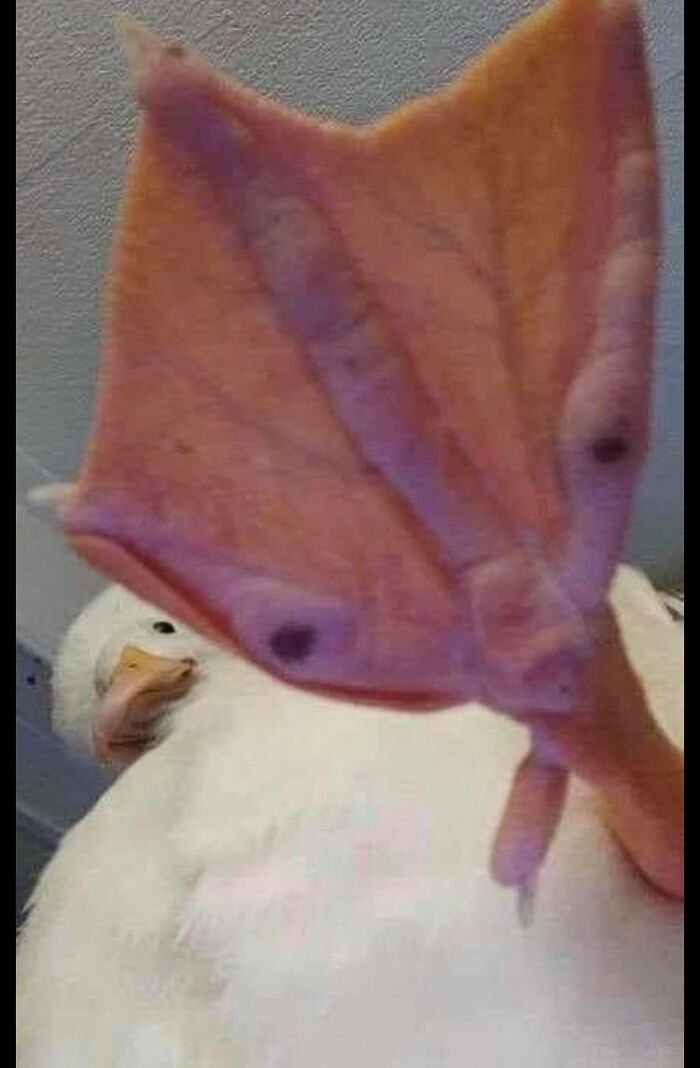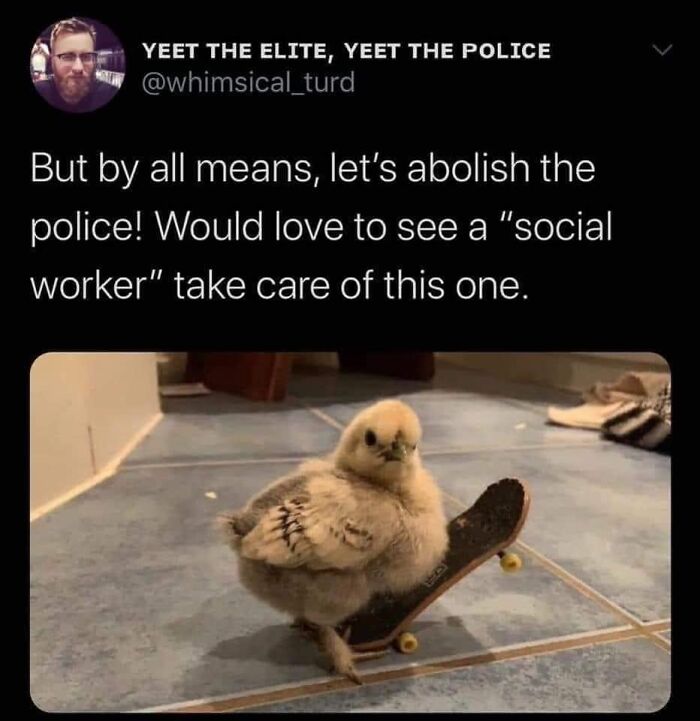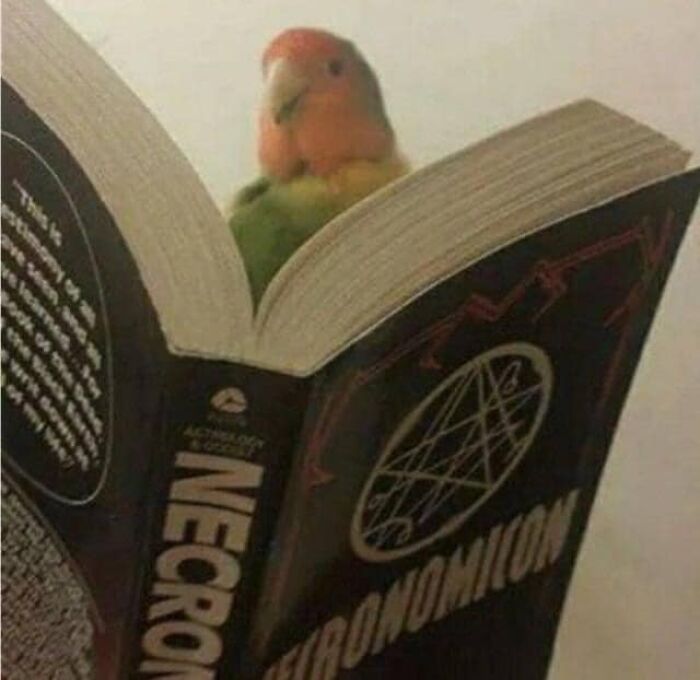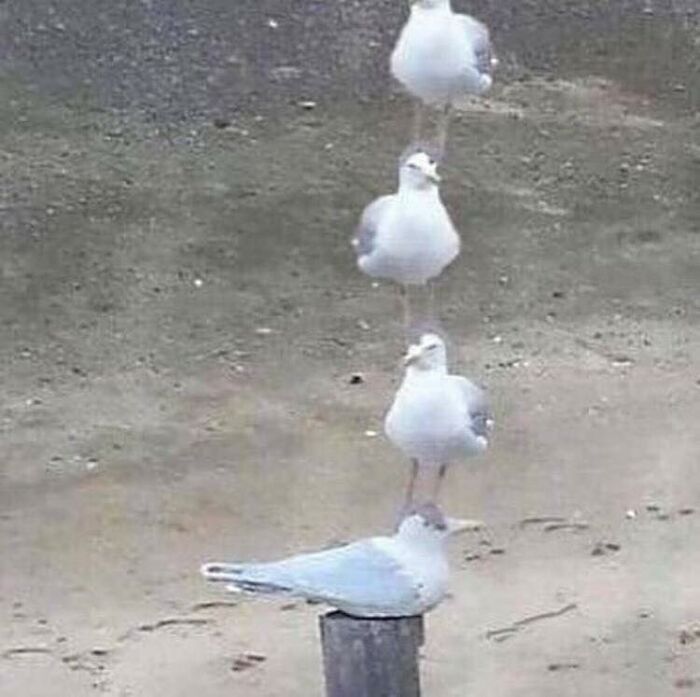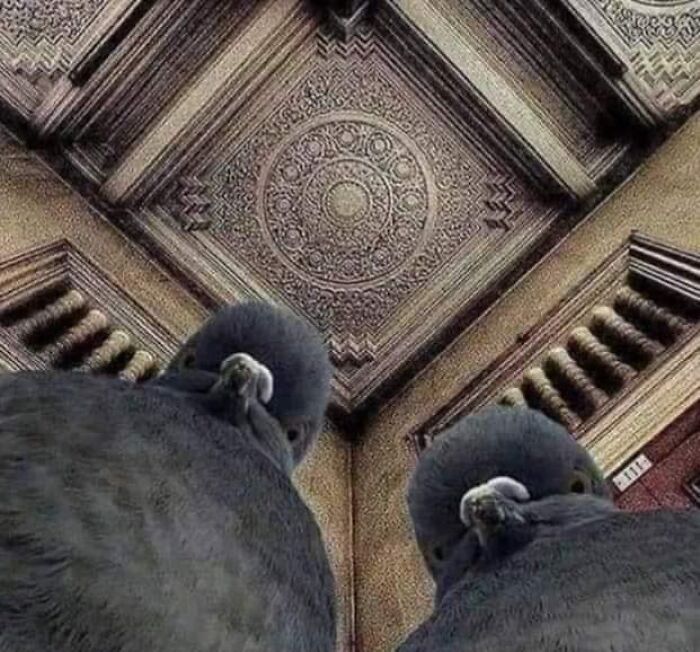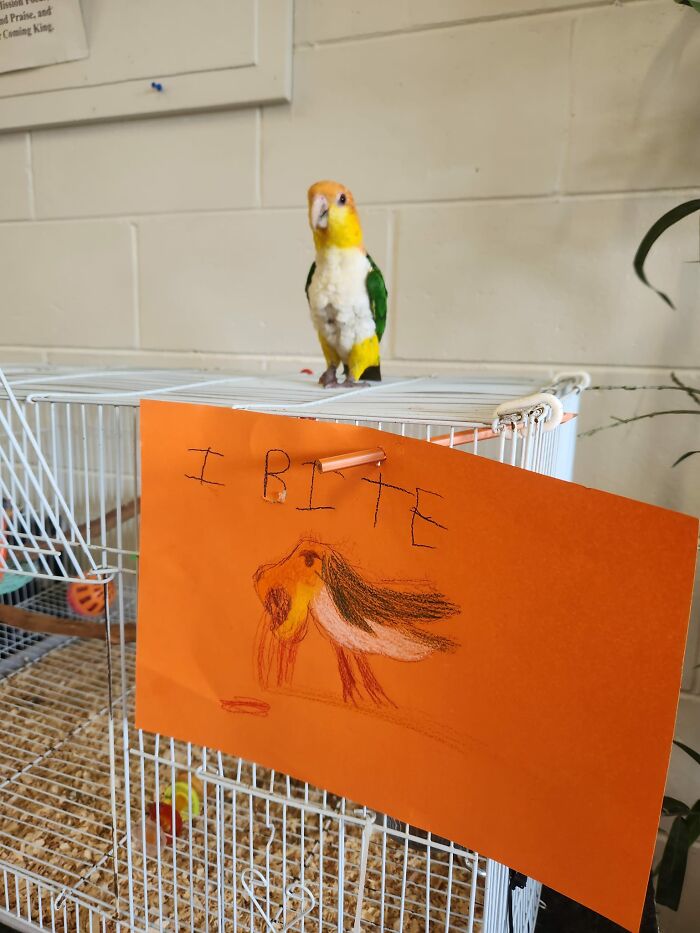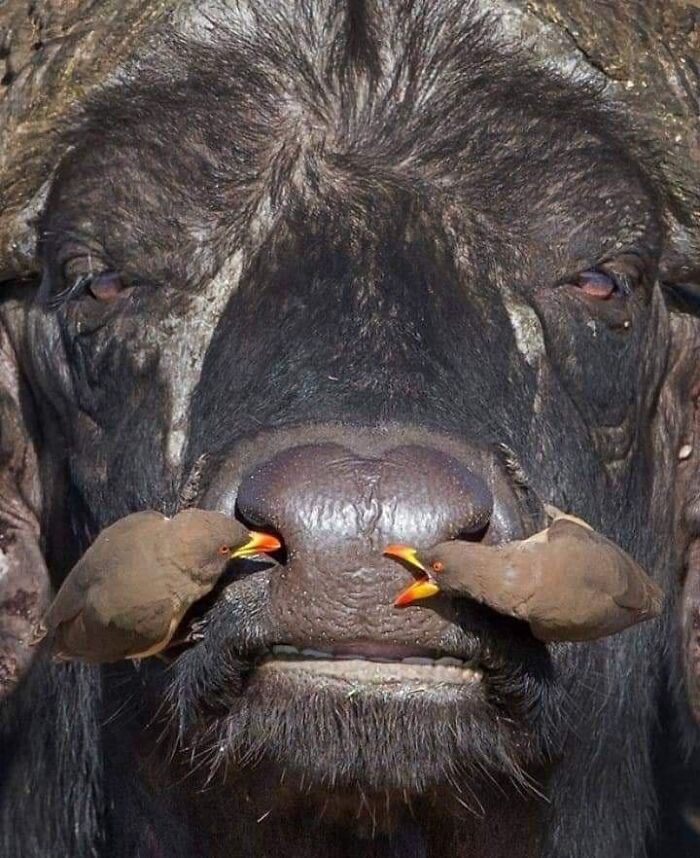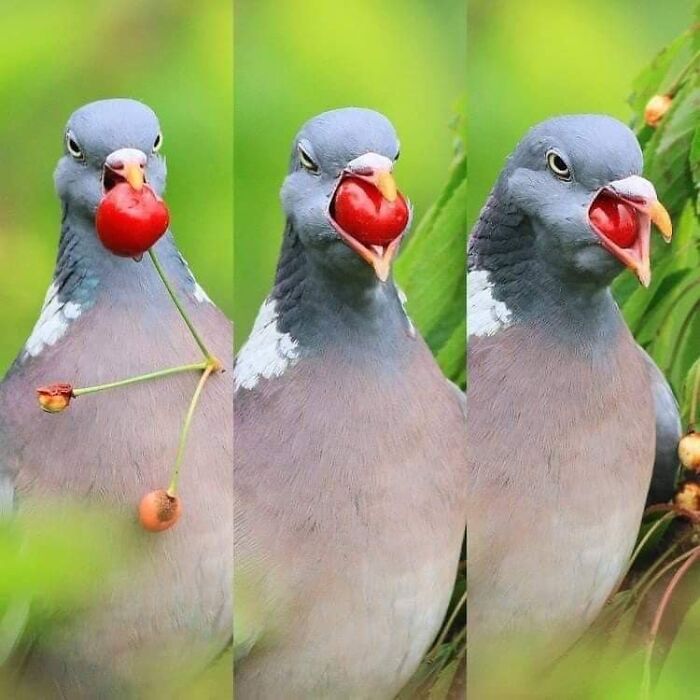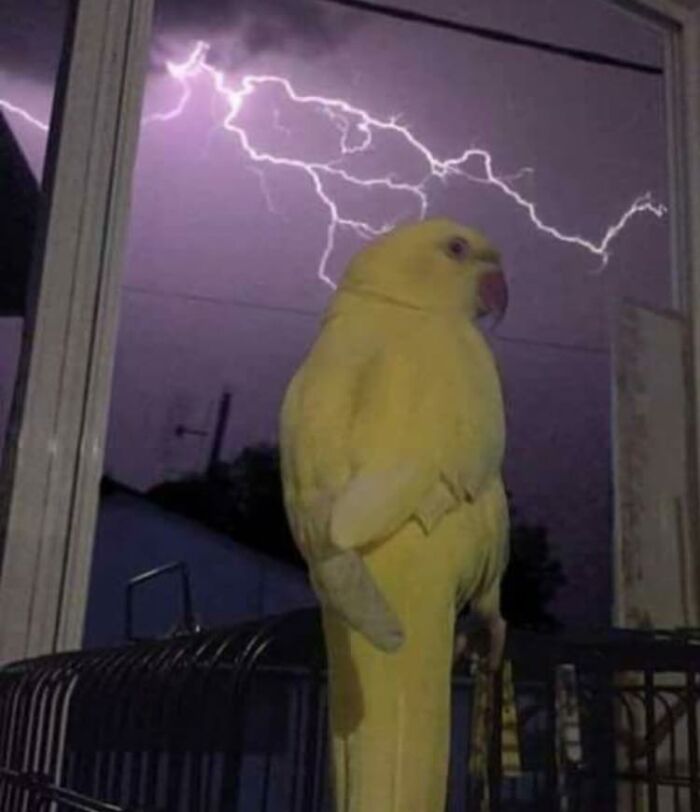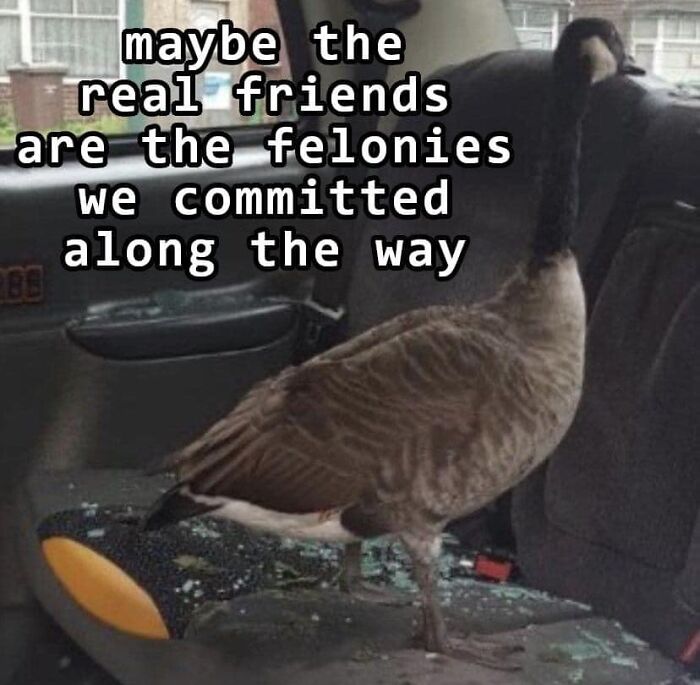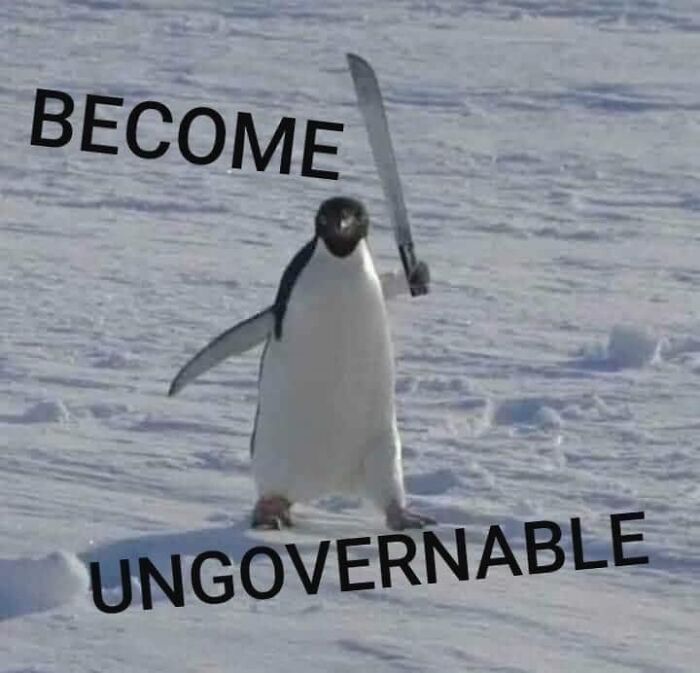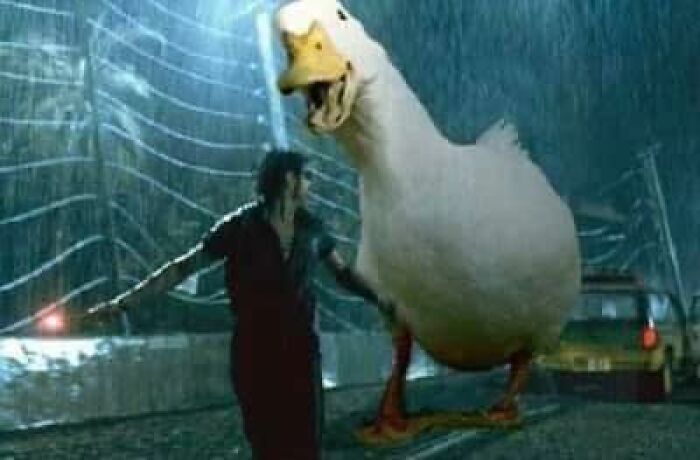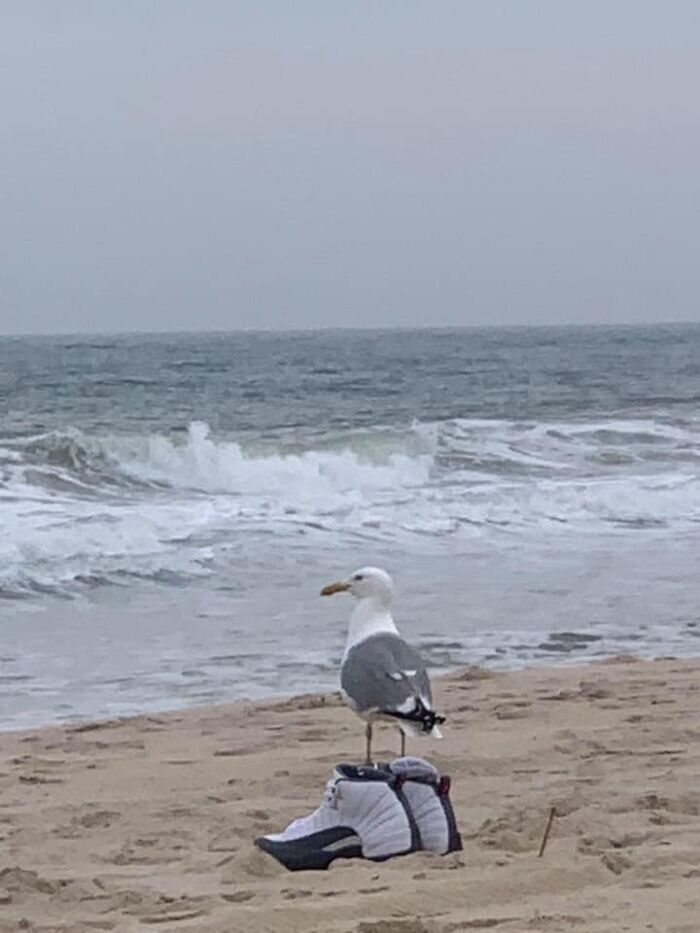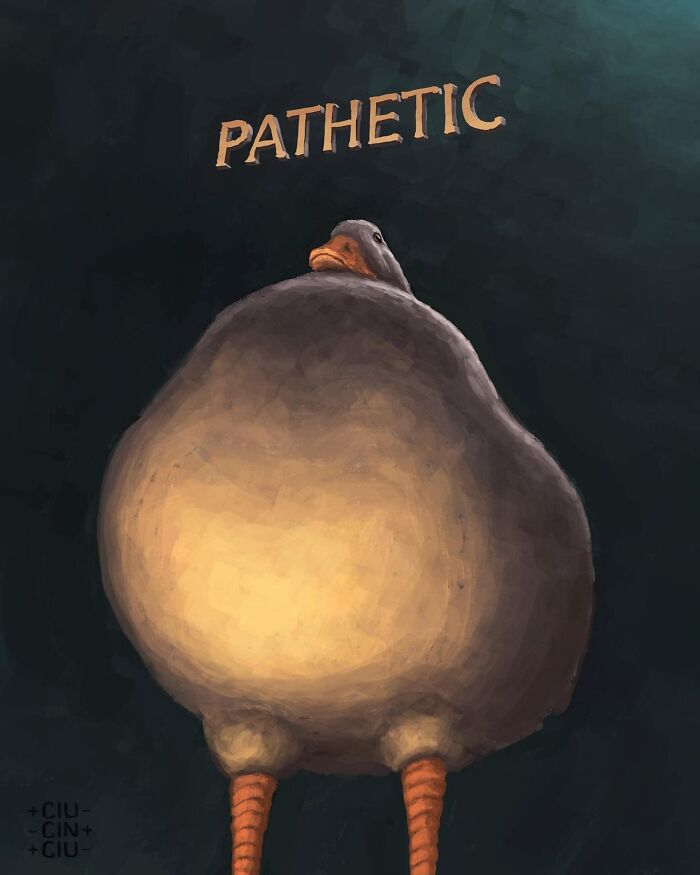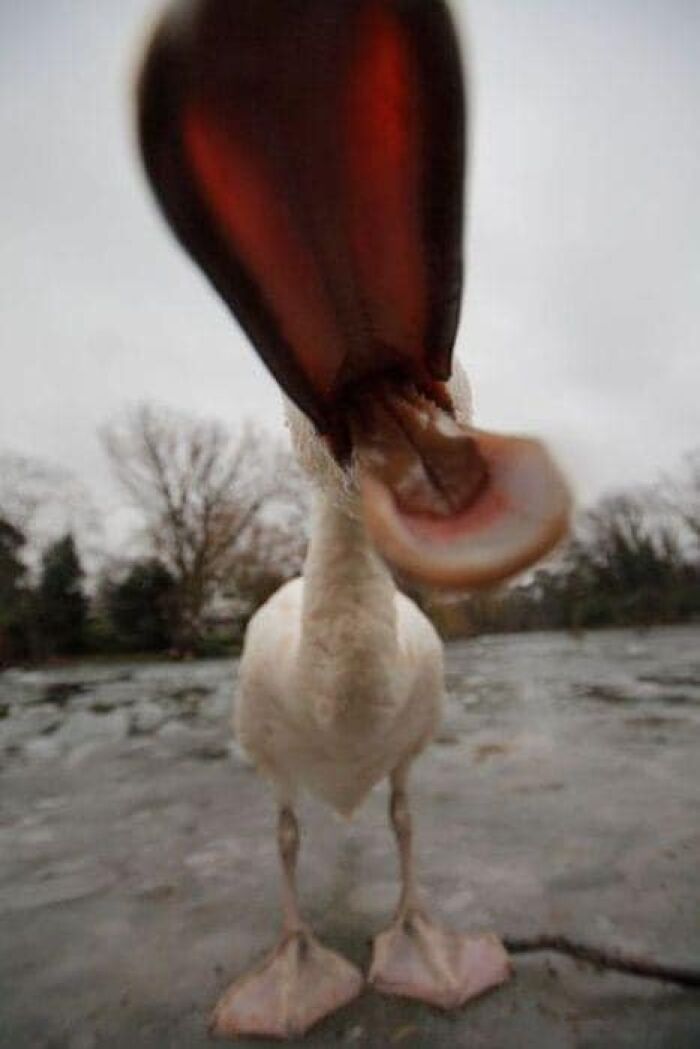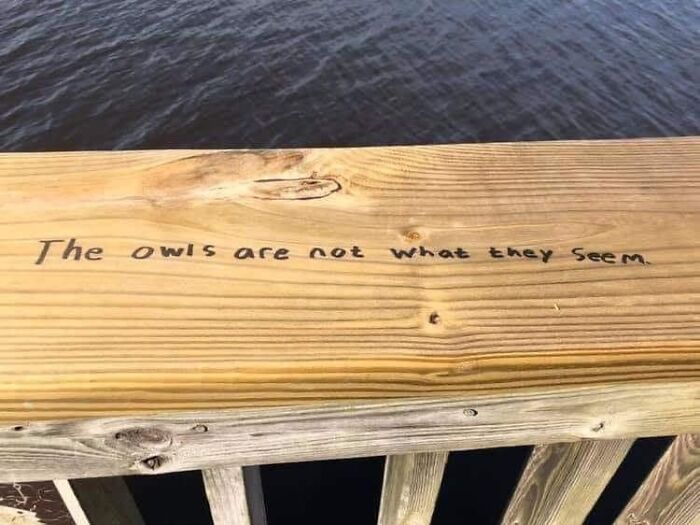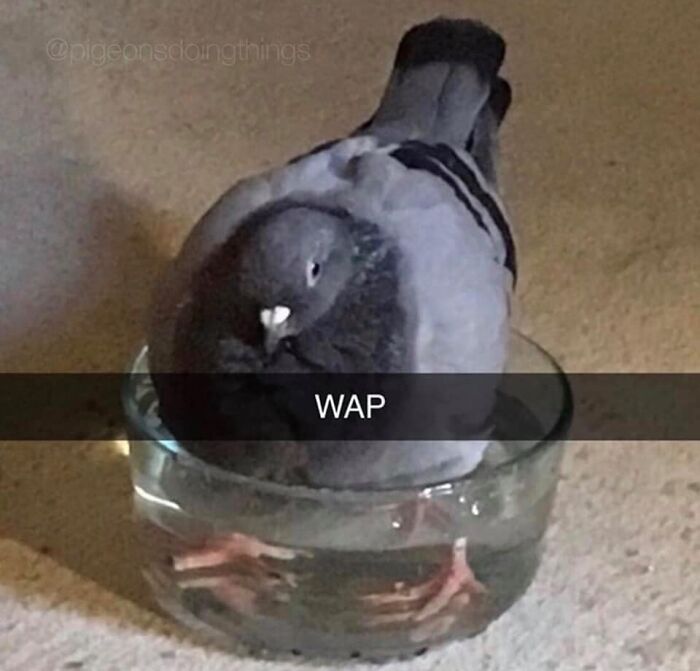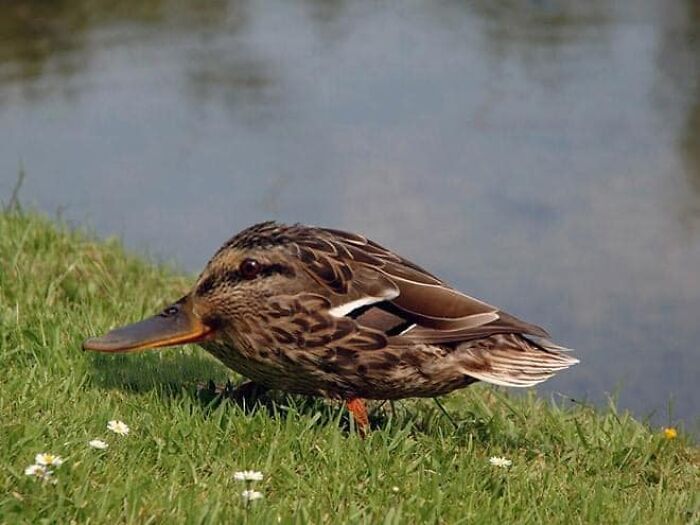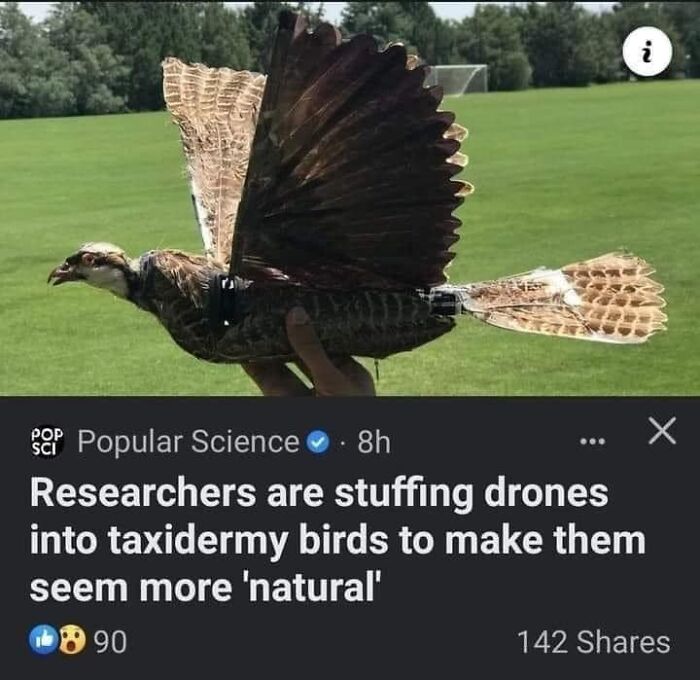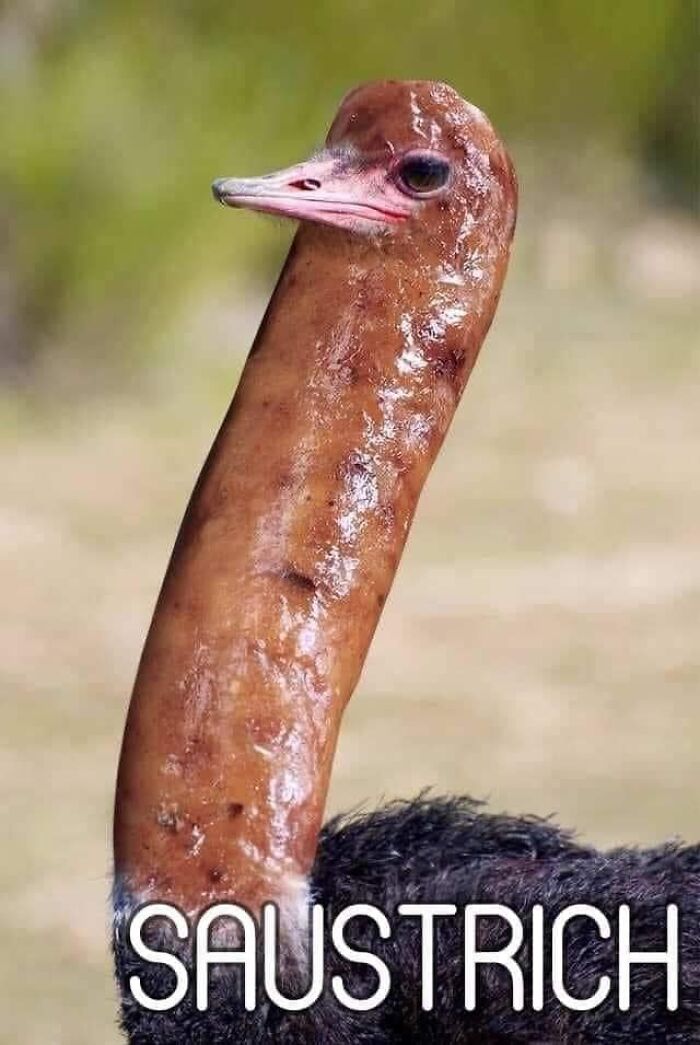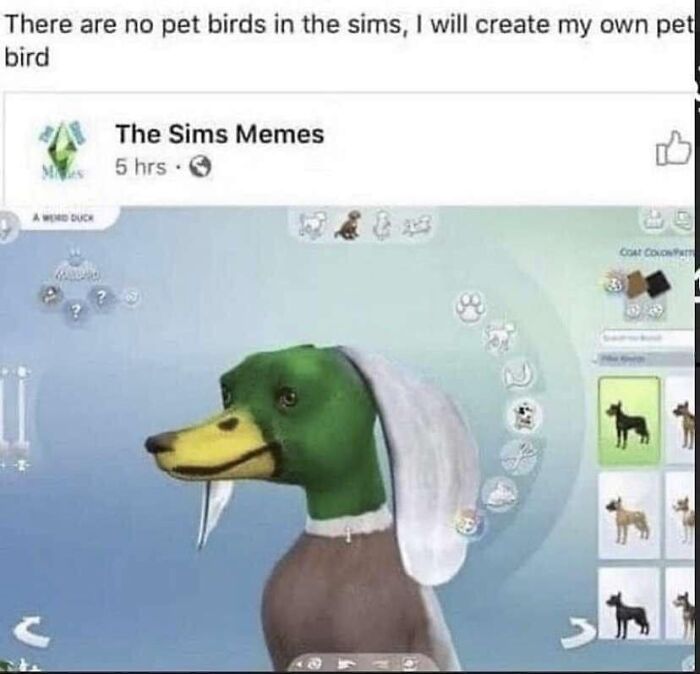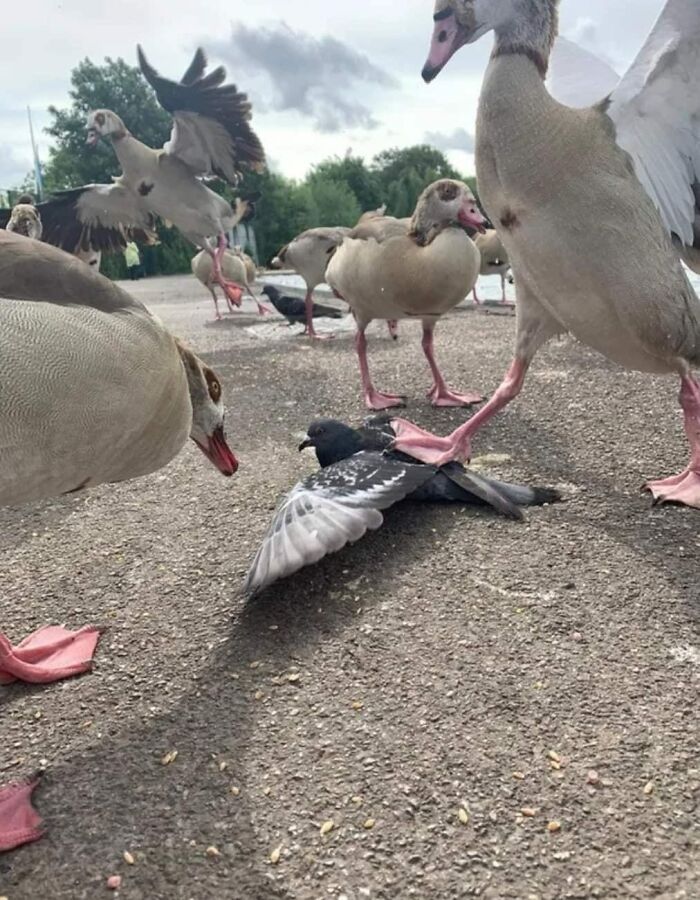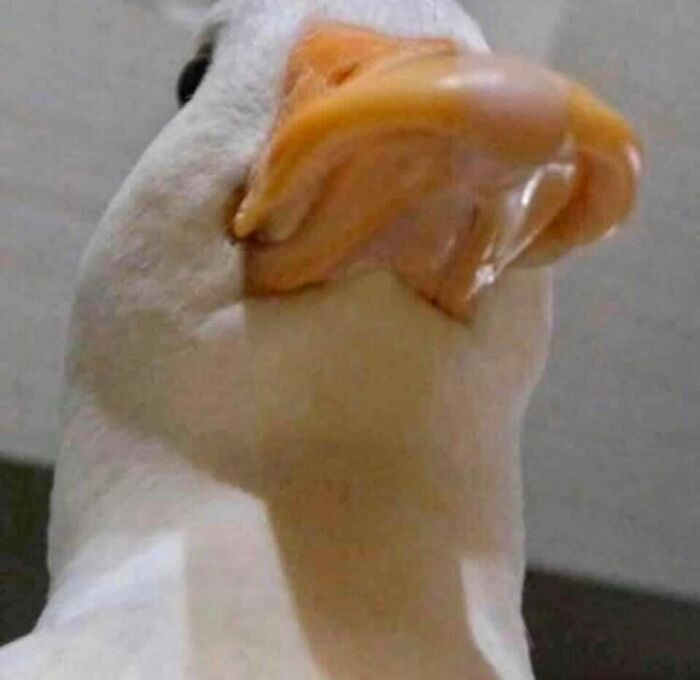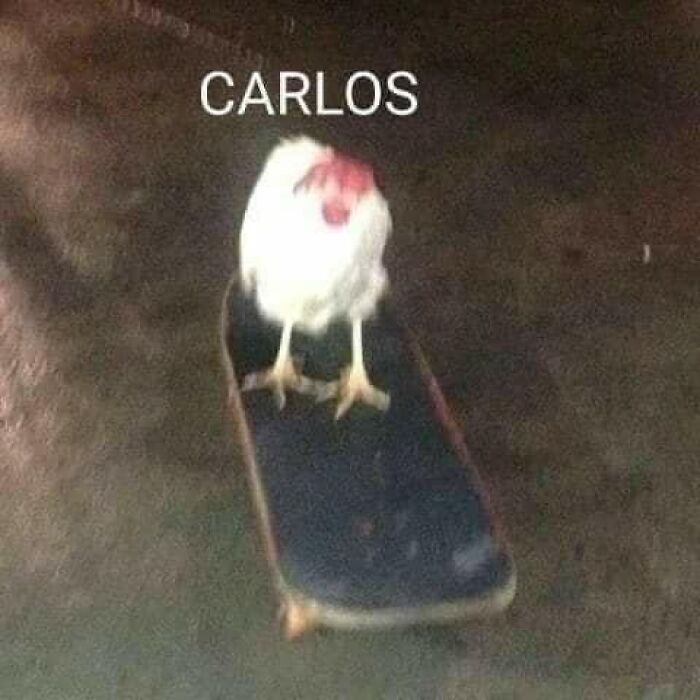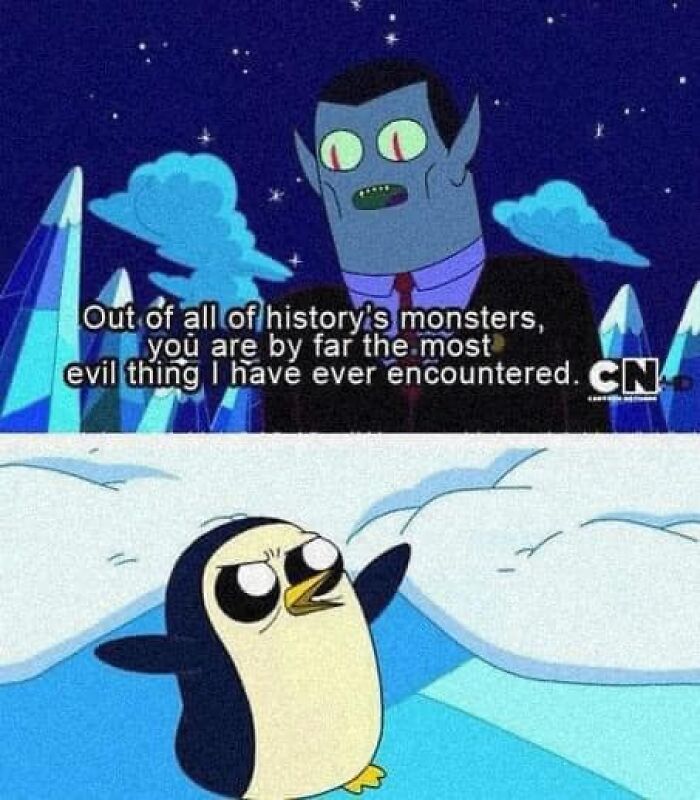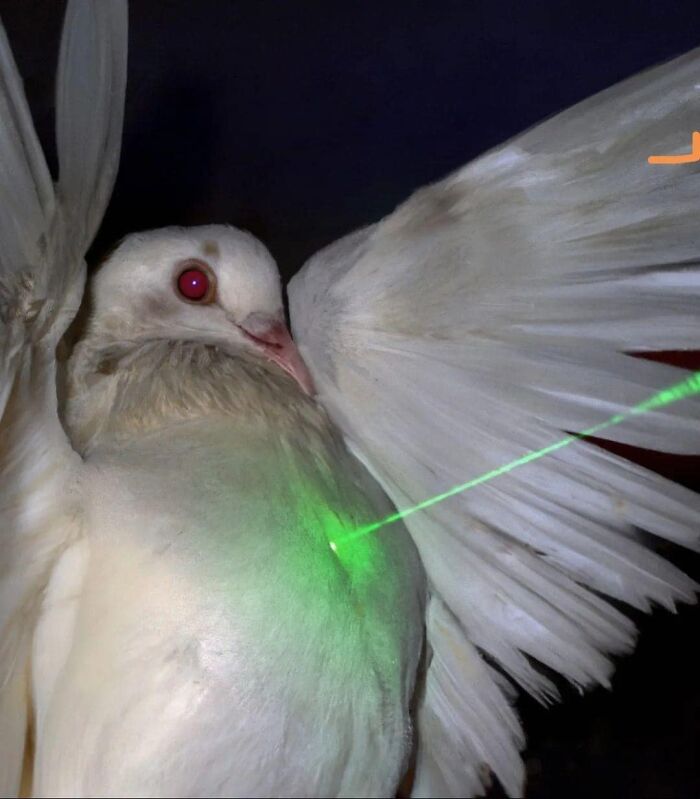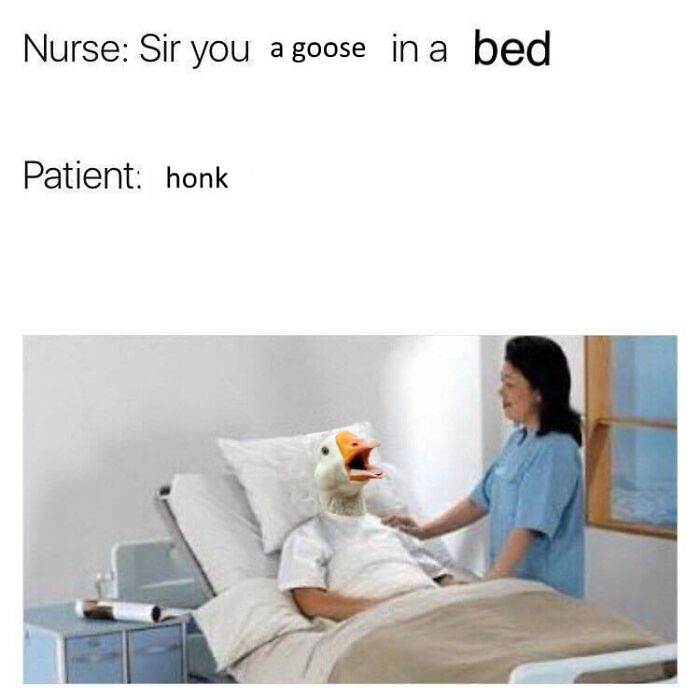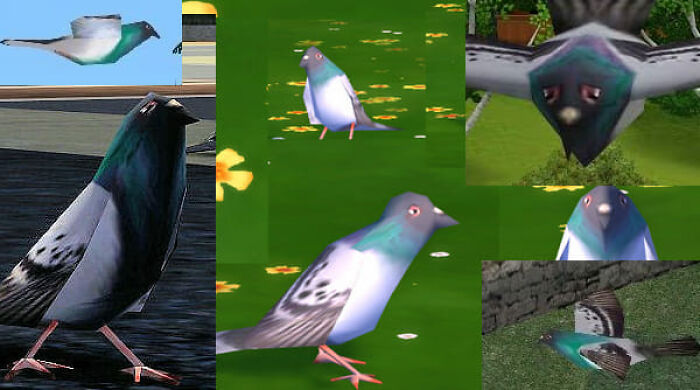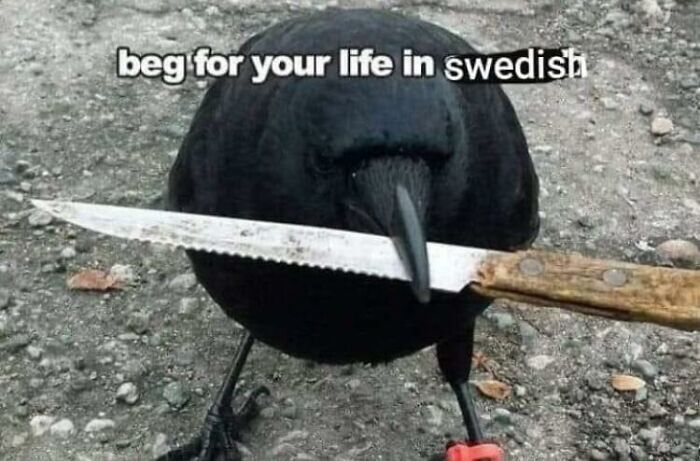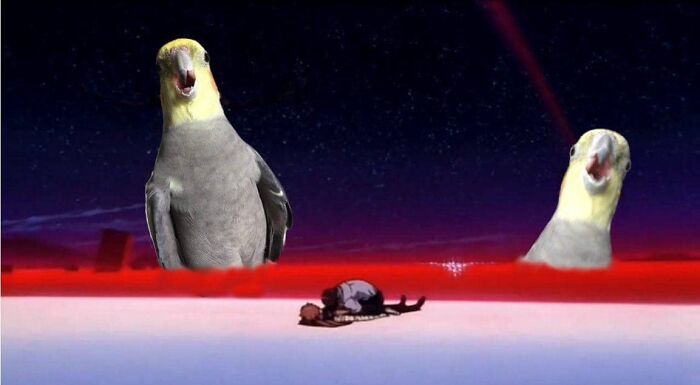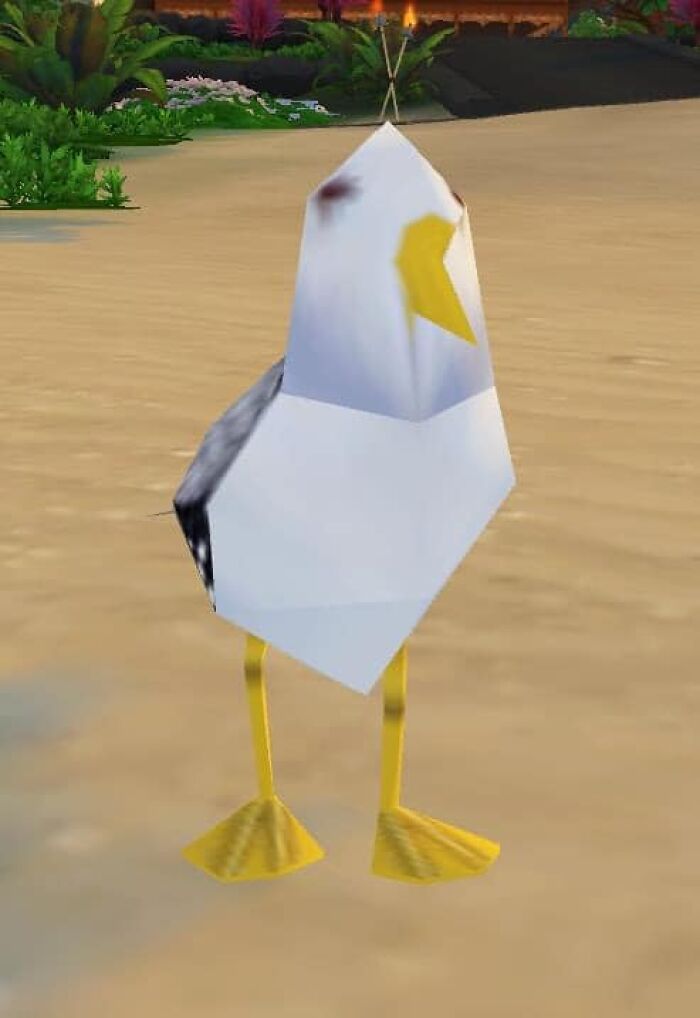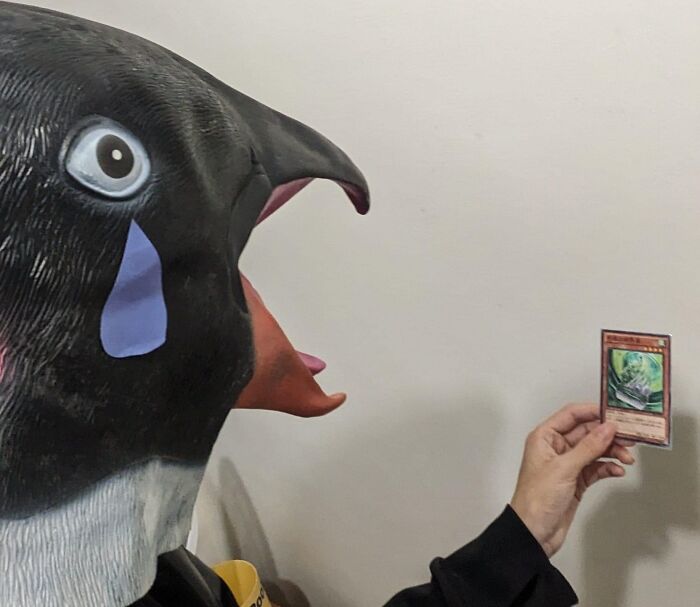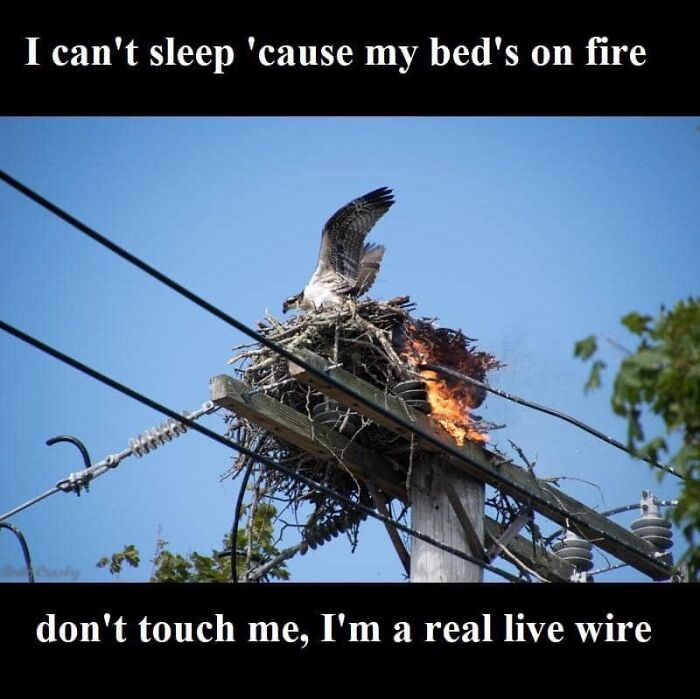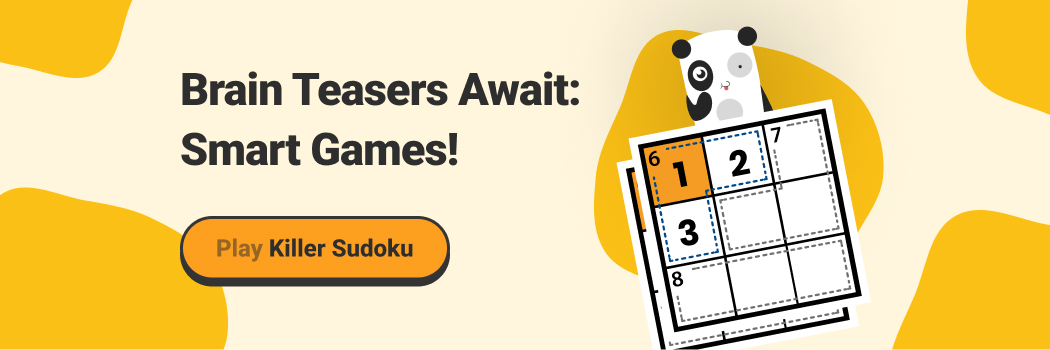I once matched with a young woman on Tinder who was afraid of pigeons. She said they were too unpredictable. I can't remember the exact reason why, but we didn't meet even once. Maybe it was my lack of empathy toward her avian fears. But had I been aware of the Facebook page 'Birds With Threatening Auras', maybe we could've hit it off after all.
As its name suggests, this online project shares pictures of feathery creatures that seem to have had enough of everyone's shenanigans. Whether it's a goose chasing after university students or a parrot gazing into a storm, these well-timed images are so surprising that they raise more questions than they provide answers.
More info: Facebook
This post may include affiliate links.
But have you wondered why we humans often see threats when there are none? To answer this question, let's take a look at a 2018 research paper by David Levari and his colleagues, titled 'Prevalence-induced concept change in human judgment.'
"We brought volunteers into our laboratory and gave them a simple task – to look at a series of computer-generated faces and decide which ones seem 'threatening,'" Levari, then a Postdoctoral Researcher in Psychology at Harvard University, explained. "The faces had been carefully designed by researchers to range from very intimidating to very harmless."
As the scientists showed participants fewer and fewer threatening faces over time, they discovered that people expanded their definition of "threatening" to include a wider range of faces.
Simply put, when they ran out of threatening faces to find, they started calling faces threatening that they used to call harmless.
"Rather than being a consistent category, what people considered 'threats' depended on how many threats they had seen lately," Levari said.
Careful, soon BP will start censoring ducking
Load More Replies..."RELEASE THE QUACKEN!!!" "Sir, the Quacken released itself already." "FLEE! FLEE YOU FOOLS FOR WE ARE DOOMED!"
Uff! That duck is apocalyptic cross! Nothing will stop him until his thirst for human blood is satisfied
Ain't nobody no how tellin' me where to go.......Ok Myra. Anyone can fly over the gate
I assume this is one of the ducks China is sending to "solve the problem"
Interestingly, this kind of inconsistency isn't limited to judgments about threats. In another experiment, the researchers asked people to make an even simpler decision: whether colored dots on a screen were blue or purple. As blue dots became rare, people started calling slightly purple dots blue.
"They even did this when we told them blue dots were going to become rare or offered them cash prizes to stay consistent over time," Levari added. "These results suggest that this behavior isn't entirely under conscious control – otherwise, people would have been able to be consistent to earn a cash prize."
After looking at the results of their experiments on facial threat and color judgments, the research group wondered if maybe this was just a funny property of the visual system. So they set out to test if this kind of concept change also happens with non-visual judgments.
"We ran a final experiment in which we asked volunteers to read about different scientific studies, and decide which were ethical and which were unethical. We were skeptical that we would find the same inconsistencies in [this kind] of judgments that we did with colors and threat."
This was mainly because moral judgments, they suspected, would be more consistent across time than other kinds of judgments. If you think violence is wrong today, you should still think it is wrong tomorrow, regardless of how much or how little violence you see that day. However, that wasn't the case.
"Surprisingly, we found the same pattern," Levari said. "As we showed people fewer and fewer unethical studies over time, they started calling a wider range of studies unethical. In other words, just because they were reading about fewer unethical studies, they became harsher judges of what counted as ethical."
So why can't people help but expand what they call threatening when threats become rare? Research suggests that this kind of behavior is a consequence of the basic way that our brains process information – we are constantly comparing what is in front of us to its recent context.
"Instead of carefully deciding how threatening a face is compared to all other faces, the brain can just store how threatening it is compared to other faces it has seen recently, or compare it to some average of recently seen faces, or the most and least threatening faces it has seen," Levari said.
Perhaps my Tinder match had simply spent a considerable amount of time with pigeons?
Lately, I have been identifying birds with the help of sound samples (I help collect information about migratory birds with the app intended for that purpose). When I finished it I wondered why I could still hear the birds singing until my stupid monkey brain figured out that the window was open.
Coworkers and I used to mew around the building and drive our boss nuts thinking there was a kitten somewhere in the place lol
Load More Replies...They asked for payment to have their likeness printed
Load More Replies...And not one mention of police ducks. I'm disappointed in you BP that was a real missed opportunity.
Lately, I have been identifying birds with the help of sound samples (I help collect information about migratory birds with the app intended for that purpose). When I finished it I wondered why I could still hear the birds singing until my stupid monkey brain figured out that the window was open.
Coworkers and I used to mew around the building and drive our boss nuts thinking there was a kitten somewhere in the place lol
Load More Replies...They asked for payment to have their likeness printed
Load More Replies...And not one mention of police ducks. I'm disappointed in you BP that was a real missed opportunity.

 Dark Mode
Dark Mode  No fees, cancel anytime
No fees, cancel anytime 




